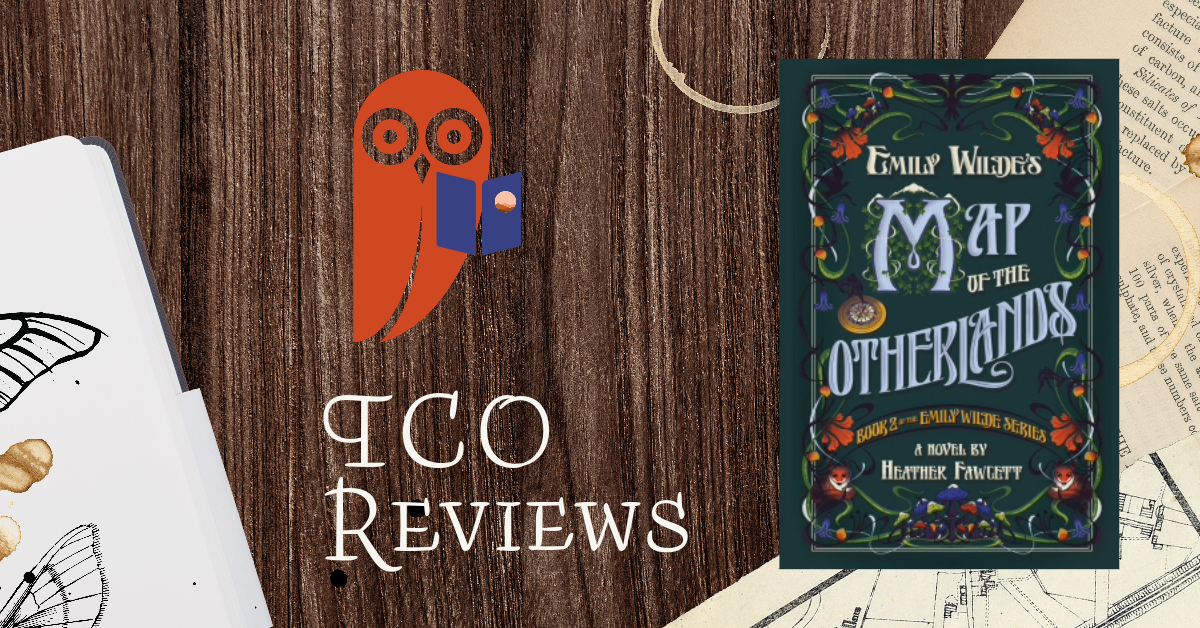Emily Wilde’s Encyclopaedia of Fairies is an Autumn book in spirit, but not in practice. Despite the academic vibes, the book actually takes place over a dark, frigid, Norwegian winter. But the latest entry in the series, Emily Wilde’s Map of the Otherlands is a perfect fireside material. (Thanks to NetGalley and Random House for the gift copy!)
Encyclopaedia of Fairies is such a fun read, especially because of the epistolary format. Map of the Otherlands builds on the successes of its predecessor, diving deeper into wordlbuilding while expanding on its protagonists’ arcs. But how does this approach map to the strengths of the first – will fans also enjoy this one?
Stories in parallel, not series
Emily Wilde has moved on from her Encyclopaedia. Her latest research project is the titular Map of the Otherlands, trying to catalogue all known fae spaces. She’s particularly interested in connections between Faeirie lands, hinted at but never proven by earlier researchers. This effort serves a dual purpose. It expands Emily’s knowledge of the Fae world, while also aiding the hunt for Bambleby’s backdoor into his.
As Emily starts planning for an expedition, her world comes crashing down around her. A senior lecturer seems hell-bent on discrediting her paper from her time in Norway. A mysterious figure keeps popping up and giving her clues to a mystery she’s not aware of. Bambleby seems less in control of his powers than might be desirable. And then, angry Fae invade campus, causing massive destruction. So it’s no wonder she decides to start her travels early, Bambleby, niece / research assistant, and grumpy skeptic in tow.
As you maybe can tell, this story has quite a different structure from the last novel. Where the prior novel introduced new plotlines in sequence, Map of the Otherlands kicks them all off at once. Because the stories run in parallel, it’s easier to draw connections between them, to see the interplay in the themes. It’s easier, too, to focus on Emily’s growth arc as a character, to see how her reaction to the same type of challenge evolves.
But you lose a little bit of the spontaneity of Encyclopaedia of Fairies – the sense that different small adventures could combine to evolve someone more subtly. The parallel structure means that if you don’t particularly like the main cast, that’s too bad – you’re stuck with most characters the whole book through. It’s worth considering, then, how much you like these characters and this world before starting.
Expanding the view
Now, I adored Emily and Wendell and the entire world of the faeries that Fawcett set up. So despite the loss of my spontaneous structure, I was more than happy to spend more concentrated time with them here. We get to revisit some old character favorites, and meet some new ones. I particularly enjoyed watching Emily interact with her niece Ariadne, a younger mirror and a dedicated adventurer. And I cheered her on as she won the grudging respect of her more senior colleagues (and as we got to see exactly how effective she is).
But beyond the characters, I loved Fawcett’s worldbuilding. She’s got a great eye for just the right detail to make the entire setting come to life. Whether it’s the student traditions on campus or the vivid descriptions of magical happenings, I often felt as I was perfectly along for the ride. (High praise from a reader who has mild aphantasia and can’t visualize most scenes, period.) In Map of the Otherlands we also get to explore more spaces, from campus to the research sites, and that makes the characters and their story feel grounded and real.
We also get to spend more time than ever in the Faerie world – and this time, Emily’s a bit more aware of what’s going on. The Faerie sections of the novel were enchanting and spooky, not least because I cared so much about Emily by this point. Fawcett’s eye for detail expands to this setting, and she also knows when to let a character stay quiet, their refusal to share details speaking for itself. The idea of mischievous and dangerous Fair Folk that permeates the novel adds a new sense of depth and danger to this section that amplifies the stakes. I found myself consistently invested, despite the structural deviations from the prior novel.
Reader’s notes & rating (⭐⭐⭐⭐)
I love Emily and Wendell as characters, so I loved this book. But reader warning – you’ll spend what feels like more concentrated time with both, tracking a parallel set of plots. Despite these changes, I fell even more in love with these characters and this world. Four stars.
Read this if…
- You’re excited by the idea of Expeditions across the real world and the magical one
- You adored Emily and Bambleby as much as I did
- You’re ready to spend more time deeply in the magical world, and reading directly about magical battles (research plays much less of a part here)
Skip this if…
- You haven’t read the first book in the series – it’s not really a standalone
- You objected either to Emily or Wendell – the story centers them way more here
- You object to romance being a driving factor for any characters, ever
Emily Wilde’s Map of the Otherlands will be published January 16, 2024.
